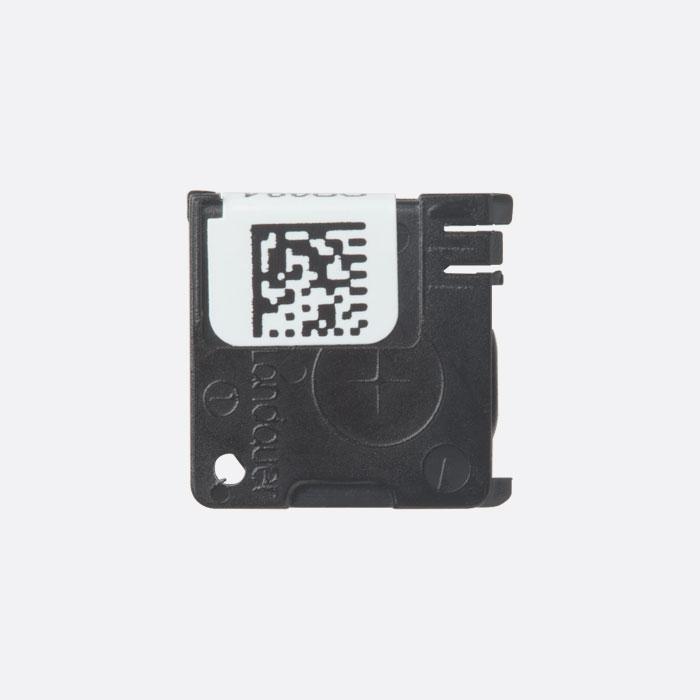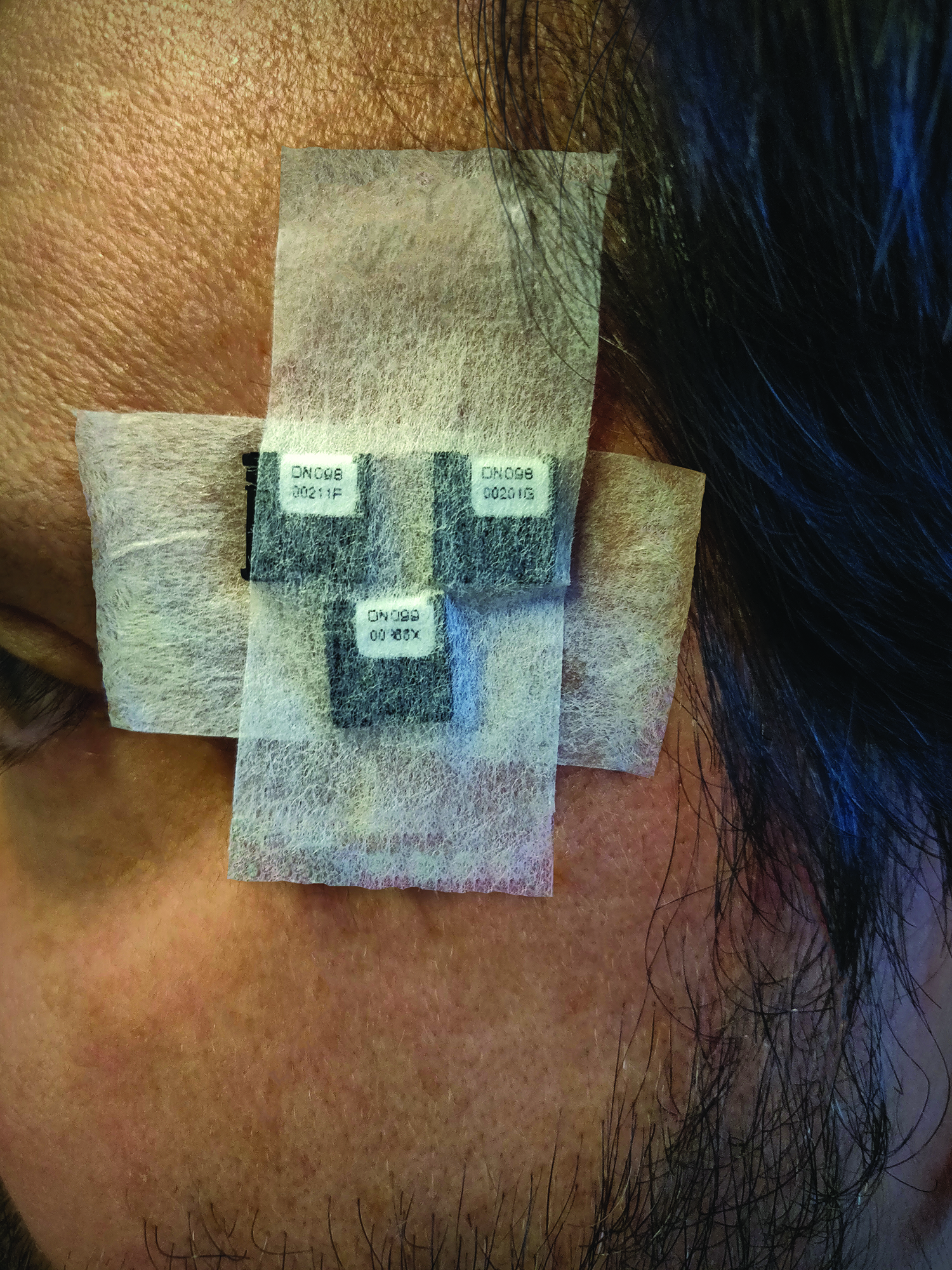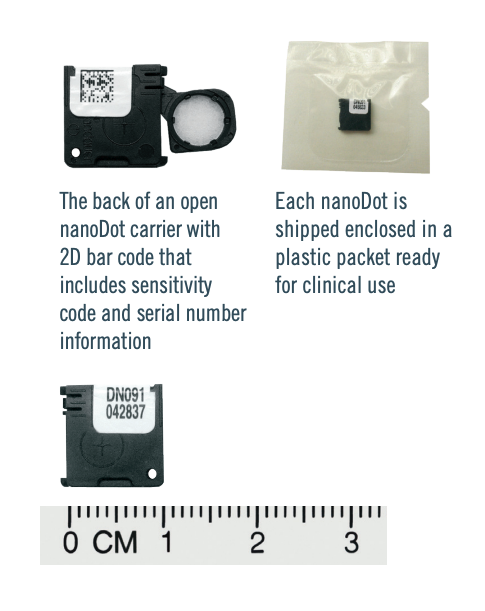The nanoDot is a useful patient dosimetry verification tool
- Wide operating energy range (5 keV-20 MeV) makes nanoDots an ideal solution in multiple settings, including diagnostic radiology, nuclear medicine, interventional procedures, radiation oncology or any single point radiation measurement requirement1
- Complete reanalysis capabilities - Non-destructive readout allows for reanalysis and electronic data archiving, dose verification and intermittent analysis for total dose accumulation - No post-measurement correction factors required - 2D bar code contains dosimeter sensitivity and serial number for chain of custody
- Dosimeter preparation eliminated with single-use dosimeters
- No heating parameters to maintain
- No nitrogen gas required
- No wire to be connected to the monitor or reader
- Minimal angular or energy dependencies with appropriate calibration
- Can be used to measure skin dose at a point of interest
- Can be used on curved surfaces (eye, breast) with appropriate angular dependence correction factors applied see Figure 1
- Can be used for in- and out-of-field measurements, including eye dose
- Used for entrance dose and electron measurements
- For use in RapidArc or TomoTherapy, total electron skin treatments, HDR, Brachytherapy or other applications
- Dosimeters can be placed anywhere on the body, are wireless and radiolucent
- Dosimeters can be used without buildup to make surface dose measurements or in radiation oncology with buildup to make measurements at various depths2
Note: LANDAUER provides a set of calibration dosimeters exposed at a beam quality of 80 kVp on a PMMA phantom at normal incidence for conventional (non-mammography) diagnostic radiology applications. For radiation oncology applications, LANDAUER provides a set of screened, unexposed calibration dosimeters that can be irradiated using a radiation therapy beam quality of your choosing, or you may alternatively request a calibration dosimeter set exposed to a 662 keV beam quality (Cs-137).
1 For calibrating microSTARii readers appropriately, separate calibrations should be performed for diagnostic and therapeutic energies
2 CIRS Plastic Water nanoDots buildup available in three sizes - 1.5cm, 1.0cm, or 0.5cm.



